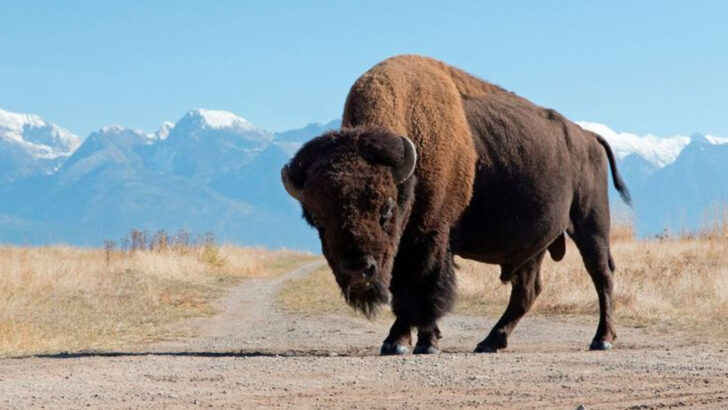The American Bison is a living legend, roaming the plains like a force of nature. With their massive frames and shaggy manes, these beasts exude power and grace.
Once teetering on the brink of extinction, the bison has made a dramatic comeback. Their story is one of resilience, and they’ve earned their spot as a symbol of the wild, untamed spirit of North America.
More than just a pretty face, bison are crucial to the ecosystem, shaping the land they roam. Their impact goes beyond the surface, leaving an imprint on everything from plant life to other wildlife.
In a world where so many species are fading into history, the American Bison stands tall, proud, and unforgettable. Ready to discover what makes these giants truly iconic? Let’s dive in.
The Largest Land Mammal
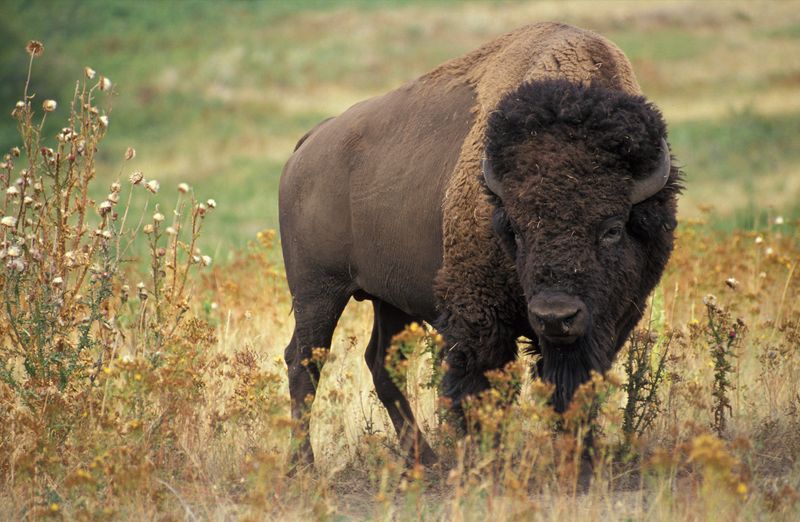
The American Bison, North America’s largest land mammal, can weigh up to 2,000 pounds. This massive creature stands about 6 feet tall at the shoulder, making it an imposing figure on the plains.
Bison have a humped back and large head, distinct features that contribute to their majestic appearance. Despite their size, bison are surprisingly agile and can reach speeds of up to 35 miles per hour.
Their sheer size and power make them a symbol of strength and resilience in the wilderness.
The Bison’s Historical Significance
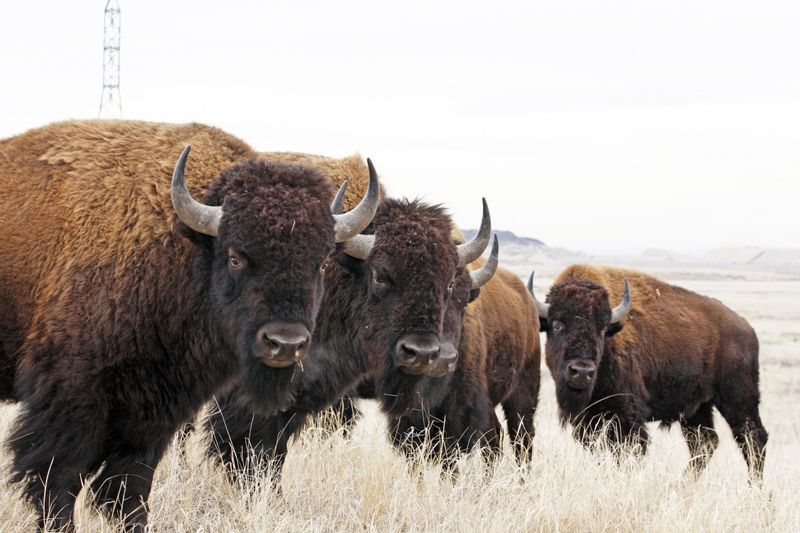
The American Bison holds significant cultural and historical value, especially for Indigenous peoples of North America. Bison provided food, clothing, and materials for tools and shelter, making them an essential part of life.
The near-extinction of bison in the late 19th century was a tragic chapter, but efforts to restore their populations have been successful. Today, the bison’s comeback stands as a testament to conservation efforts and the resilience of this remarkable species.
Surviving the Ice Age
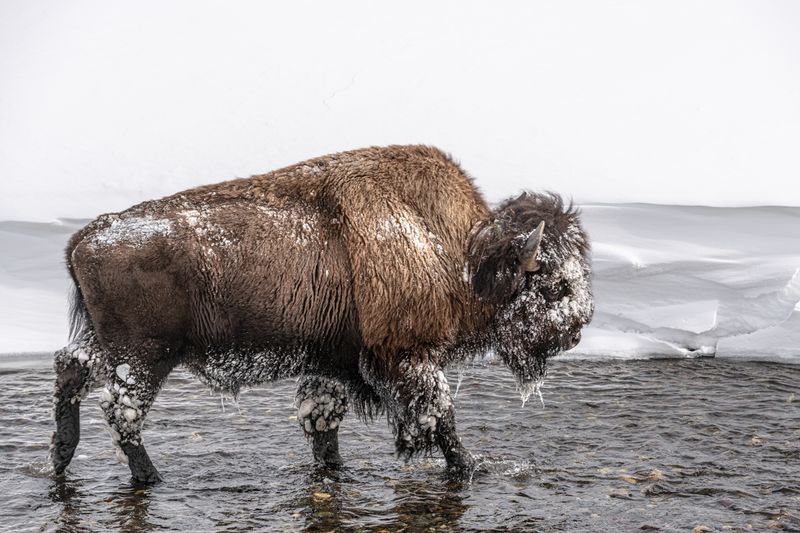
American Bison are survivors of the Ice Age, having roamed the continent for thousands of years. These creatures adapted to harsh climates, grazing on the grasslands that emerged as glaciers receded.
Bison’s ability to withstand cold environments and scarcity of food contributed to their survival. Their thick coats and efficient foraging habits enabled them to thrive in challenging conditions. This adaptability is a key factor in their continued existence today.
The Bison’s Comeback
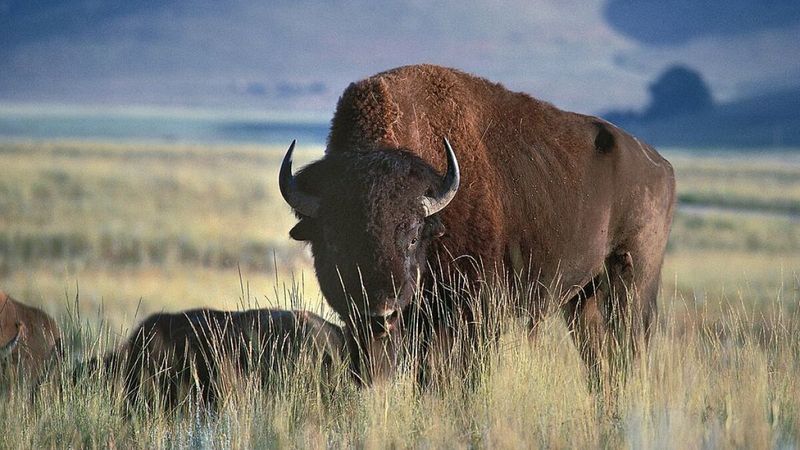
Once on the brink of extinction, American Bison populations have rebounded due to dedicated conservation efforts. National parks and reserves have played a crucial role in their recovery.
These protected areas provide safe habitats where bison can graze and roam freely. The bison’s resurgence is a success story in wildlife conservation, highlighting the importance of preserving natural habitats. This comeback is a beacon of hope for other endangered species.
Bison’s Role in the Ecosystem
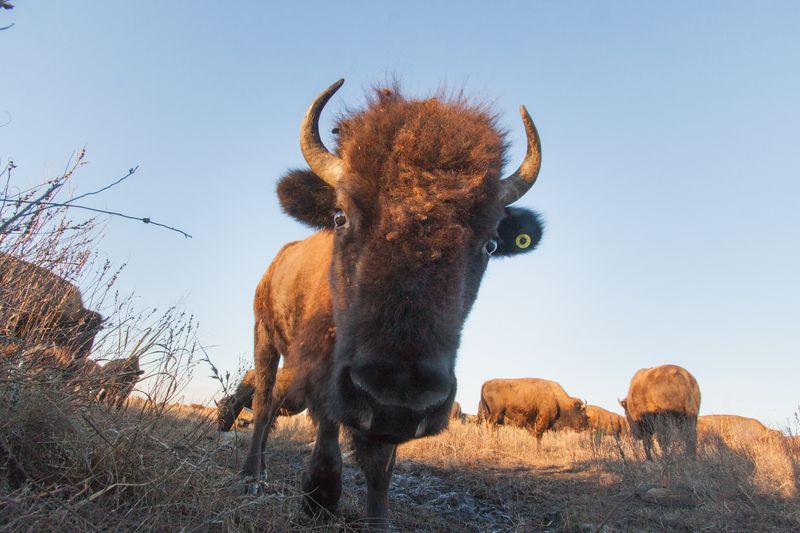
American Bison are keystone species, playing a crucial role in maintaining the health of grassland ecosystems. Their grazing patterns promote plant diversity and help regulate the growth of grasses and shrubs.
Bison also create habitats for other wildlife through their wallowing behavior, which forms depressions that collect water. This interaction with the ecosystem supports biodiversity and ensures the vitality of the prairies. Bison’s presence is integral to the balance of nature.
Bison and the Grassland Habitat
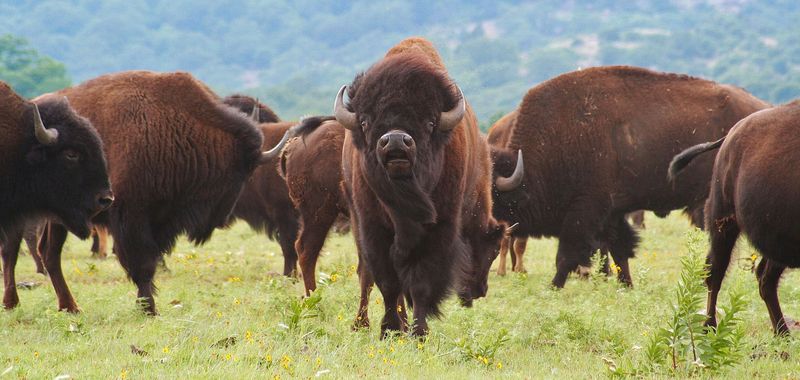
Bison are perfectly adapted to the grassland habitats they call home. Their digestive systems are designed to break down tough grasses, making them efficient grazers. The health of grasslands is closely linked to bison activity, as their grazing helps maintain plant diversity.
Bison also contribute to soil health through their movement, which aerates the ground and promotes nutrient cycling. This harmonious relationship between bison and their habitat is vital for ecological balance.
The Bison’s Unique Characteristics
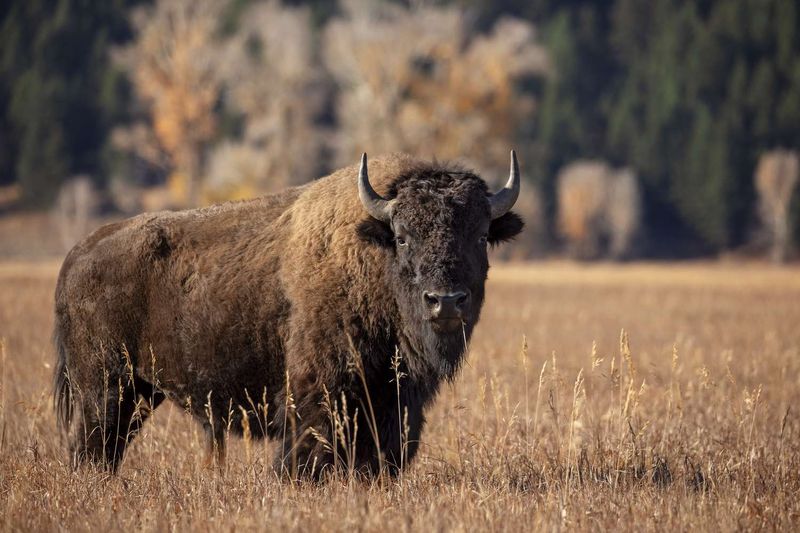
With their distinctive humped backs and shaggy fur, American Bison are easily recognizable. They have large heads, curved horns, and a thick coat that changes with the seasons. Bison’s winter coats are especially dense, providing insulation against harsh weather.
Their keen senses of smell and hearing aid in detecting predators and navigating their environment. These unique characteristics make bison well-suited to their habitats and contribute to their iconic status.
Bison as a Symbol of Freedom
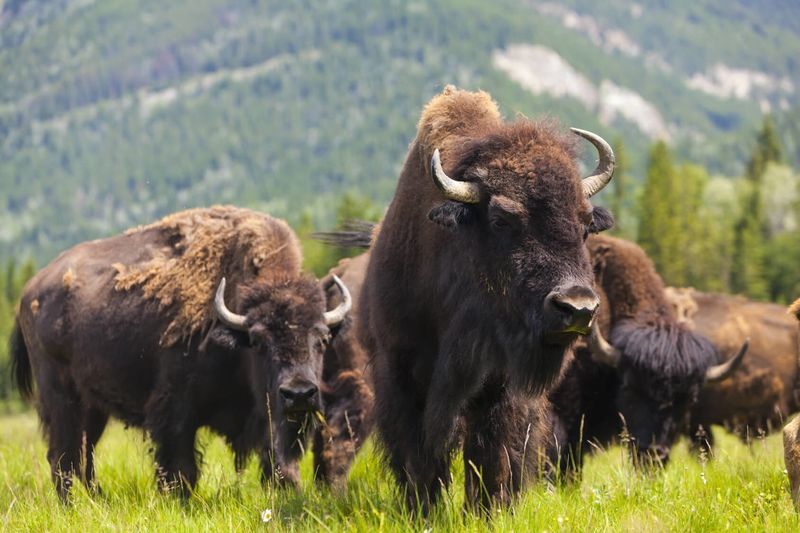
The American Bison embodies the spirit of freedom and the open plains. Their presence on the vast prairies represents the untamed wilderness and the rich natural heritage of North America. Bison were once free to roam millions of acres, representing the unbridled freedom of the land.
Despite challenges, bison continue to symbolize resilience and the enduring spirit of the wild. They remind us of the importance of preserving freedom for future generations.
Bison’s Cultural Impact
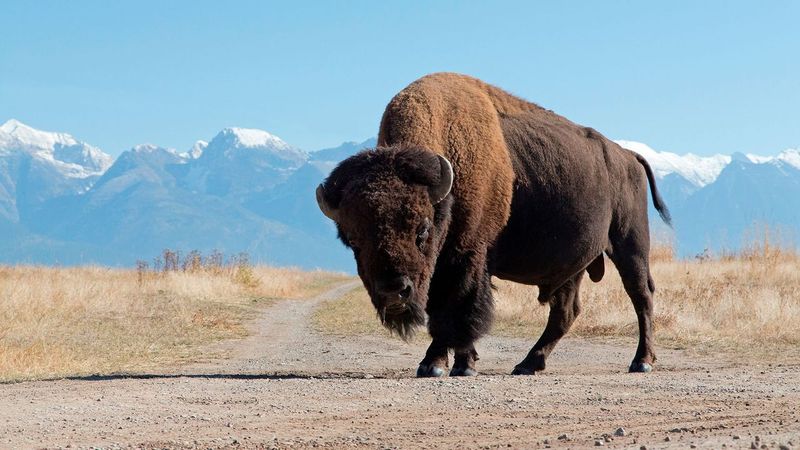
American Bison hold a revered place in the cultural traditions of many Native American tribes. They feature prominently in myths, stories, and ceremonies, symbolizing abundance and spiritual significance. Bison were central to the way of life, providing sustenance and materials for everyday living.
The cultural impact of bison extends beyond history, influencing contemporary art, music, and storytelling. Their enduring legacy is a testament to their profound influence on human culture.
Modern Bison Population Management
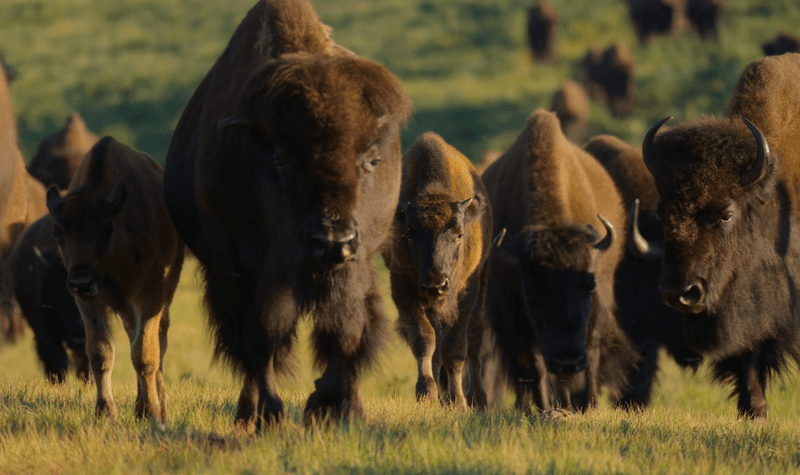
Managing modern bison populations involves balancing conservation efforts with ecological and human interests. National parks and reserves monitor bison health and numbers to ensure sustainable populations. Innovative techniques, such as genetic testing, help maintain genetic diversity within herds.
Balancing bison populations with other land uses, such as agriculture, presents challenges. However, successful management practices contribute to the thriving bison populations we see today. These efforts are crucial for ongoing conservation success.
The Bison’s Genetic Diversity
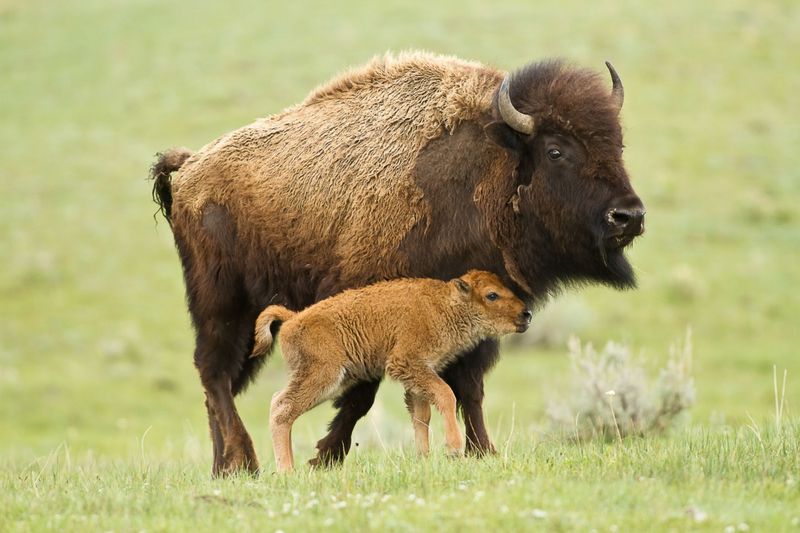
Genetic diversity is vital for the health and resilience of American Bison populations. Conservation practices focus on maintaining this diversity to prevent inbreeding and ensure adaptability. Genetic studies and breeding programs are employed to preserve a wide gene pool.
This diversity allows bison to adapt to changing environmental conditions and resist diseases. Protecting their genetic heritage is essential for the long-term survival of bison as a species. Their diversity is a strength to be preserved.
Bison in Popular Culture
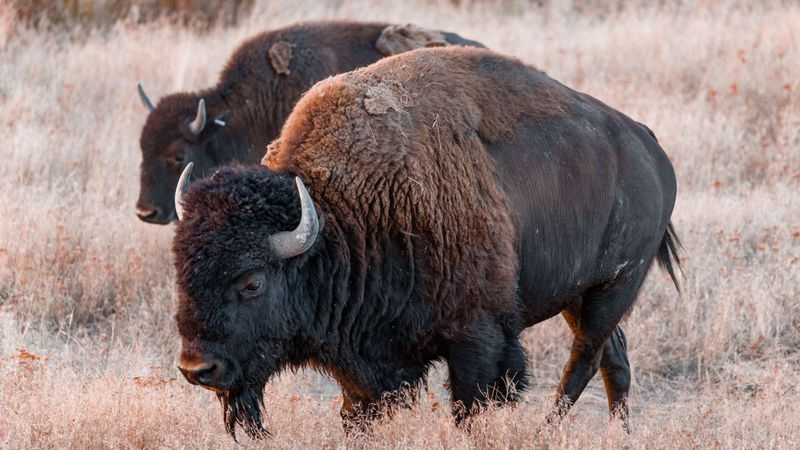
The American Bison has captured the imagination of people worldwide, featuring prominently in popular culture. From iconic films showcasing the Wild West to artworks that celebrate their majestic presence, bison are symbols of the American frontier.
They star in documentaries highlighting their ecological importance and recovery stories. Bison also appear in logos and branding, representing strength and vitality. Their iconic status continues to inspire and resonate with audiences across generations.
The Bison’s Natural Behavior
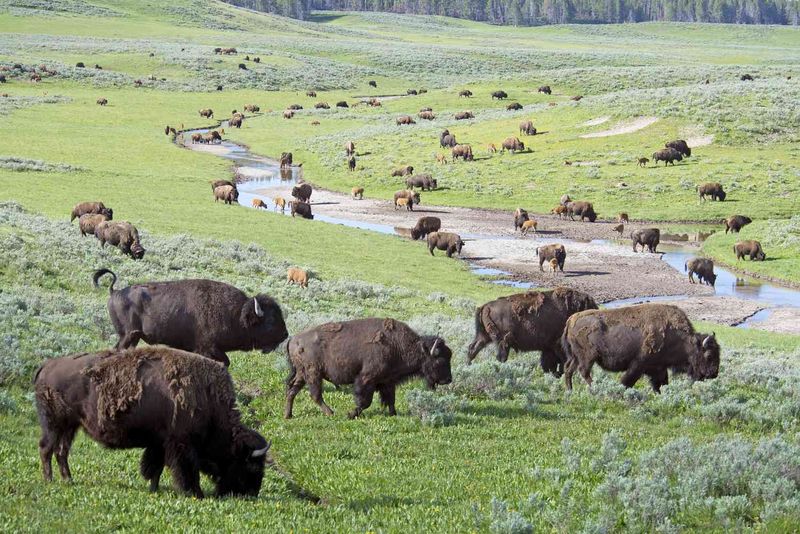
Observing the natural behavior of American Bison offers insight into their lives and social dynamics. Bison exhibit herd behavior, often seen grazing or resting together. They communicate through grunts and body language, establishing social hierarchies within the group.
Wallowing is a common behavior where bison roll in dirt, creating depressions in the ground. These activities not only maintain their health but also play a role in their ecosystem. Understanding bison behavior enriches our appreciation of these creatures.
Bison’s Role in Climate Resilience
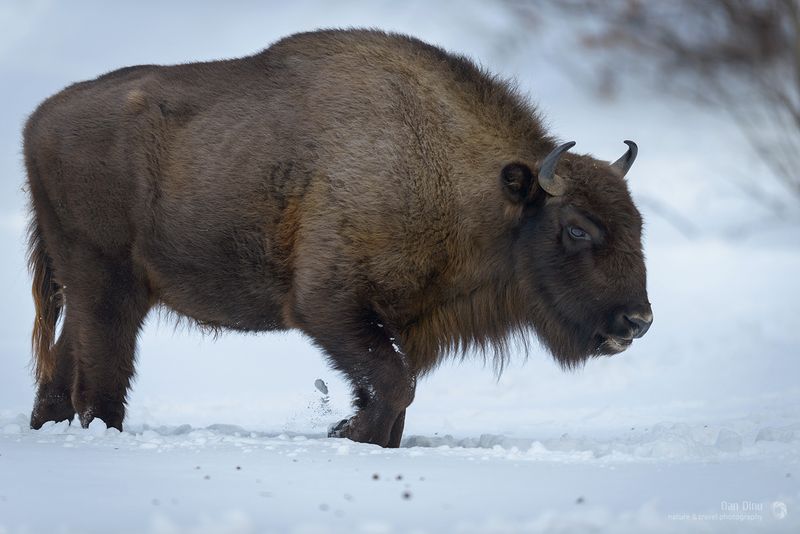
Bison have an inherent resilience to varying climate conditions, making them important to climate adaptation strategies. Their grazing practices help maintain grassland health, which is crucial for carbon sequestration.
Bison also contribute to soil regeneration and water conservation, enhancing the ecosystem’s ability to withstand climate impacts. By promoting biodiversity and ecosystem health, bison play an essential role in climate resilience efforts. Their presence is a natural ally in addressing climate challenges.

